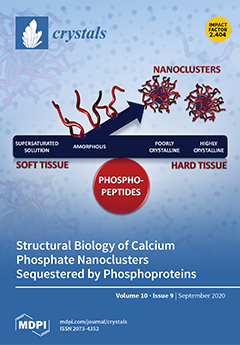Anosovite crystalline is an ideal mineral for flotation from the Ti-bearing blast furnace (TBBF) slag. Ti
3O
5 crystal and Al
2TiO
5 crystal are two kinds of anosovites, and the Al element significantly affects the electronic structure and flotation performance of anosovite. The floatability of Ti
3O
5 and Al
2TiO
5 crystals were studied by Mulliken populations, energy bands, and density of states (DOS). In addition, the flotation experiment of the two kinds of anosovite crystals (Ti
3O
5 and Al
2TiO
5) was conducted and proved that the density functional theory (DFT) calculation results were accurate. Compared with Ti
3O
5 crystal, the Fermi energy level of Al
2TiO
5 crystal shifts around 2 eV in a negative direction by DOS analysis, which is beneficial to flotation. And Al
2TiO
5 crystal possesses a larger value of bond population, which is 0.41, for Ti-O bonds than Ti
3O
5 crystal and the bond length of Ti-O in Al
2TiO
5 crystal is shorter, therefore Al
2TiO
5 crystal shows a stronger covalency. The changes of the Fermi energy level and the covalency bonds in Al
2TiO
5 crystal both demonstrated that doping the Al component into the Ti
3O
5 crystal was beneficial to improve the flotation effect. Moreover, the Al
2TiO
5 crystal had a higher flotation efficiency compared to the Ti
3O
5 crystal when the dosages of salicylhydroxamic acid (SHA) and sodium oleate were the same. Therefore, both DFT calculation and experiment show that the flotation effect of the Al
2TiO
5 crystal is better than that of the Ti
3O
5 crystal.
Full article





